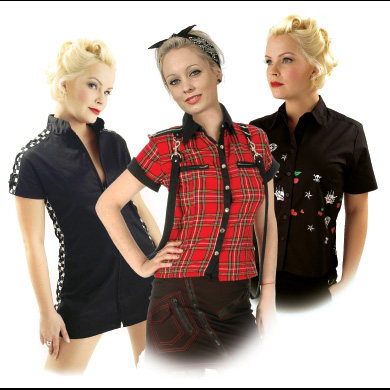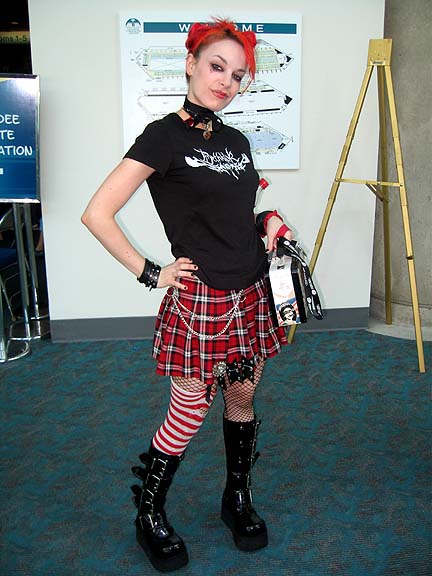 Punk fashion is the styles of clothing, hairstyles, cosmetics, jewelry, and body modifications of the punk subculture. Punk fashion varies widely from Vivienne Westwood styles to styles modeled on bands like The Exploited. The distinct social dress of other subcultures and art movements, including glam rock, skinheads, rude boys, greasers, and mods have influenced punk fashion. Punk fashion has likewise influenced the styles of these groups, as well as those of popular culture. Punks use clothing as a way of making a statement.
Punk fashion is the styles of clothing, hairstyles, cosmetics, jewelry, and body modifications of the punk subculture. Punk fashion varies widely from Vivienne Westwood styles to styles modeled on bands like The Exploited. The distinct social dress of other subcultures and art movements, including glam rock, skinheads, rude boys, greasers, and mods have influenced punk fashion. Punk fashion has likewise influenced the styles of these groups, as well as those of popular culture. Punks use clothing as a way of making a statement.
Original styles
The original punk fashions of the 1970s were intended to appear as confrontational, shocking and rebellious as possible. This style of punk dress was significantly different from what would later be considered the basic punk look. Many items that were commonly worn by punks in the 1970s became less common later on, and new elements were constantly added to the punk image. A great deal of punk fashion from the 1970s was based on the designs of Vivienne Westwood and Malcolm McLaren, as well as the dress styles of punk role models such as the Ramones, Richard Hell, Patti Smith and the Bromley Contingent.Mainstream punk style was influenced by clothes sold in Malcolm McLaren's shop SEX. McLaren has credited this style to his first impressions of Richard Hell while McLaren was in New York City, supposedly managing the The New York Dolls (Note: In the documentary Punk: Attitude, David Johansen said McLaren was never their manager, and that he only designed clothes for them and booked them one concert; the Red Show.)
Deliberately offensive T-shirts were popular in the early punk scene, such as the infamous DESTROY T-shirt sold at SEX, which featured an inverted crucifix and a Nazi Swastika. These T-shirts, like other punk clothing items, were often torn on purpose. Other items in early British punk fashion included: Anarchy symbols; brightly-colored or white and black dress shirts randomly covered in slogans (such as "Only Anarchists are pretty"); fake blood; patches; and deliberately controversial images (such as portraits of Marx, Stalin and Mussolini) were popular. Leather rocker jackets and customised blazers were early, and are still a common fixture of punk fashion.
Preferred footwear included military boots, motorcycle boots, Brothel creepers, Chuck Taylor All-Stars, and (later on) Dr. Martens boots. Tapered jeans, tight leather pants, pants with leopard patterns, and bondage trousers were popular choices. Hair was cropped and deliberately made to look messy; in reaction to the long smooth hairstyles that were common in the 1960s and early 1970s. Hair was often dyed bright unnatural colors. Although provocative, these hairstyles were not as extreme as later punk hairstyles, such as liberty spikes or the Mohawk hairstyle.
Other accoutrements worn by some punks included: BDSM fashions; fishnet stockings (sometimes ripped); spike bands and other studded or spiked jewelry; safety pins (in clothes and as body piercings); silver bracelets and heavy eyeliner worn by both men and women. Many female punks rebelled against the stereotypical image of a woman by combining clothes that were delicate or pretty with clothes that were considered masculine, such as combining a Ballet tutu with big, clunky boots.
Punk clothing sometimes incorporated everyday objects for aesthetic effect. Purposely-ripped clothes were held together by safety pins or wrapped with tape; black bin liners (garbage bags) became dresses, shirts and skirts. Other items added to clothing or as jewelry included razor blades and chains. Leather, rubber and vinyl clothing have been common, possibly due to their connection with transgressive sexual practices, such as bondage and S&M









No comments:
Post a Comment